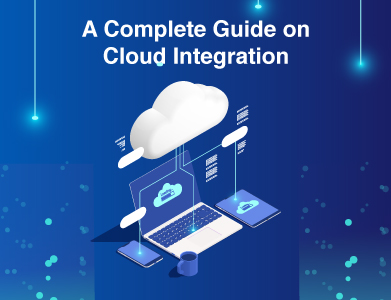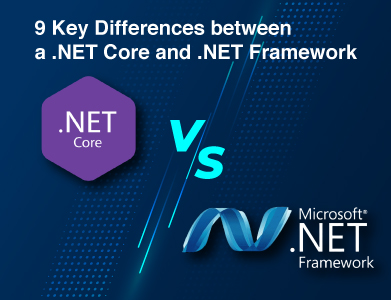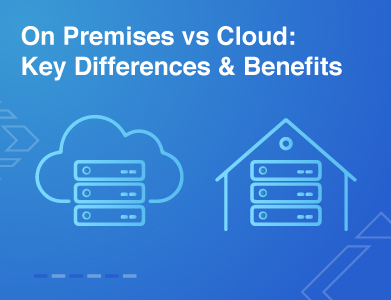Expertise
The telecom industry is at a crossroads. The presence of OTT services and access to connectivity and communication is the commodity today that calls for innovative telcos, thus cloud computing allows telecoms to shift from connectivity beyond basic services to smart, scalable automated services.
With cloud technology, telecom service providers can now store and process data efficiently. They can then build robust data warehouses that answer the changing requirements of modern enterprise and consumer worlds.
This article discusses how cloud computing empowers telecom operators in terms of achieving operational efficiency and unlocking new sources of revenue through digital transformation. Learn how cloud communication computing platforms are transforming the future of communications.
What is a Telco Cloud?
A Telco Cloud is a cloud-based system built specifically for telecom companies. It helps them manage networks more efficiently by using virtualized services instead of expensive physical hardware.
With a Telco Cloud, telecom providers can:
✔ Saves costs by removing expensive hardware through software-based applications.
✔ Scale services easily to deal with more users and new technologies.
✔ Enhance smart automation for network management.
While regular telecom networks are based on big and bulky equipment, a Telco Cloud differentiates between network tasks and the physical device. It means significant functions like firewalls and load balancing activities along with network security can be operated on virtual platforms, which increase speed, flexibility, and efficiency.
What is Cloud-Computing in the Telecom Industry?
In a traditional telecom network, software runs on dedicated hardware. However, as telecom companies seek quicker and more agile systems at minimal costs, many are switching to cloud computing.
Cloud computing in telecom means that data centers are at remote places where the processing of network services takes place rather than at physical infrastructure. Such a facility allows telecom companies to:
- Expand services quickly without expensive hardware upgrades
- Lower costs by paying only for the resources they use
- Improve efficiency with automation and faster processing
Cloud computing is an important component of digital transformation in telecom. It enables CSPs to evolve into modern DSPs that deliver innovative, cloud-based business communications solutions.
Cloud Computing Types and Archetypes for Telecom Businesses
Cloud computing is reshaping the telecom industry, offering businesses a way to improve operations, enhance services, and boost customer satisfaction. As more telecom companies adopt cloud communications solutions, understanding different cloud models and adoption strategies is essential for growth and innovation.
Cloud Computing Models
Telecom businesses rely on three main cloud computing models, each designed to meet different operational needs.
IaaS (Infrastructure-as-a-Service)
IaaS provides quick access to IT infrastructure resources such as servers, storage, and networking facilities for telecom companies without requiring them to buy costly hardware. PaaS gives businesses scalability, flexibility, and cost-effectiveness while it can provide service instead of controlling infrastructure.
PaaS (Platform-as-a-Service)
PaaS offers a pre-built platform upon which telecom businesses can develop, deploy, and run applications without seeing the burden of complex backend infrastructure. Development is streamlined, deployment speeded up, and maintenance efforts reduced. This is well suited to businesses that create custom telecom solutions.
SaaS (Software-as-a-Service)
SaaS allows telecom companies to deploy cloud-based applications without installation or maintenance. Such ready-to-use software solutions help in increasing efficiency by providing easy access to critical tools such as CMS, CRM, billing systems, and analytics platforms.
Cloud Computing Archetypes: Optimizers, Disruptors, Innovators
In addition to these basic cloud models, telecom companies embrace cloud communications in multiple dimensions depending on their goals and strategy.
Optimizers
Optimizers embrace cloud computing as a way to enhance current operations and deliver greater value to the customer while not changing the business model in ways that are more dramatic than this. They:
✔ Improve network performance with cloud-based caching and data acceleration
✔ Provide adaptable, customer-centric connectivity solutions
✔ Simplify processes with an integrated cloud environment
Disruptors
Disruptors can harness cloud technology as a means to establish new business models and create changes in the telecommunications industry. They:
✔ Design innovative services targeted at distinct customer requirements
✔ Utilize customer data in designing customized offers
✔ Observe local telecommunications laws with tailor-made cloud implementations
Innovators
Innovators expand beyond disruption with the use of cloud computing, reaching into emerging markets and opportunities for revenue growth. They:
✔ Use cloud-driven insights to optimize workflow and performance
✔ Integrate data from multiple sources for improved decision-making
✔ Expand into adjacent industries, unlocking new opportunities
Benefits of Cloud Computing in the Telecom Industry
1. Scalability
Cloud computing enables telecom operators to scale their IT resources up or down based on demand. They can scale resources up or down quickly to handle peak loads efficiently. This flexibility helps prevent over-provisioning and wasted costs. Overall, it enhances operational agility and service deployment.
2. Cost Efficiency
Telecom companies can reduce their upfront hardware costs by adopting a pay-as-you-go model. This shift also reduces the maintenance expenses associated with traditional data centers. Cloud computing also minimizes the need for large infrastructure investments. As such, resources can be allocated more effectively for other initiatives.
3. Agility and Innovation
Cloud environments enable rapid deployment of new services and updates, so telecom providers can innovate fast. Companies can try new technologies in cloud-based testing environments without affecting operations. This agility helps telecom firms respond better to market demands. Overall, it fosters a culture of continuous improvement and innovation.
4. Enhanced Security
Cloud providers invest heavily in security measures, such as encryption and identity management. This ensures robust data protection and compliance with regulations. Additionally, cloud platforms offer disaster recovery capabilities to minimize downtime. These features help build trust with customers by safeguarding sensitive information.
5. Operational Efficiency
Cloud computing automates routine tasks like resource provisioning and updates, so IT teams are free to engage in strategic work. Centralized management enables telecom operators to have a bird's eye view of their IT infrastructure from one dashboard. This is likely to make the operation efficient and consistent in different locations. Ultimately, it streamlines operations and increases productivity.
6. Customer Experience
Cloud-based analytics allow telecom companies to collect real-time customer data for enhanced insights. These insights can further be used for personalized services and targeted marketing approaches. The high availability of cloud communications services ensures that telecom services remain accessible at all times.
7. Global Reach and Compliance
Cloud computing enables the telecom company to expand its services globally without physical infrastructure in every location. Such an ability offers greater market reach and scalability. Furthermore, cloud providers assist telecom firms in handling complex regulatory requirements.
Trends of Cloud Computing and Telecommunications
1. Integration of Edge Computing
Telecom companies are integrating edge computing for the increasing demand for low latency services such as IoT and 5G. As a result, it can reduce latency and enhance application performance that requires real-time data processing by processing data closer to its source. Overall, edge computing improves user experiences through faster response times.
2. Roll out of 5G Network
It means, that 5G is that huge change that occurs in telecom in the light of the requirement for much speedier data and latency-free operations. Cloud Computing works hand-in-glove to allow the building of agile scalable telecom networks and infrastructure for telco operators, such that a business using cloud-native architecture and deploying it at incredible speeds through its network would get another operational automated process to fast innovation.
3. NFV or Network Function Virtualization
NFV is changing cloud computing in telecom by allowing enterprises to deploy network functions as software rather than deploying them on appliances. This also allows for higher flexibility and a more cost-efficient management of the network infrastructure. NFV enhances the general agility of networks in telecommunications.
4. Multi-Cloud Strategy
Telecom companies are increasingly adopting multi-cloud strategies to avoid vendor lock-in and optimize performance. With this strategy, they can distribute workloads across different cloud platforms based on specific needs, such as compliance and cost. A multi-cloud strategy also provides flexibility and the opportunity to negotiate better terms with cloud providers.
5. AI-driven Network Management
Telecom operators are using AI and machine learning to analyze the network data and optimize performance. AI-driven solutions can automatically identify anomalies, predict failures, and adjust resources dynamically, thus improving the quality of service with reduced downtime. With AI network management, telecom companies can satisfy their customers, and in an ever-changing marketplace, stay competitive.
6. Containerization
Containerization technologies, like Kubernetes, are becoming popular in telecom cloud computing. Containers offer a lightweight solution for deploying applications, allowing for better resource utilization and agility. This technology enables faster development and deployment of cloud-native applications.
7. Cloud-Native Development
Telecom firms embrace cloud-native development practices that promote application management in cloud environments. This will mainly be adopted in containerization and microservices architecture to expedite the speed of development cycles. Applications broken into smaller independent services help telecom companies quickly respond to the needs of the market.
8. Security and Compliance
The greater dependency on cloud computing requires that the involvement of telecom service companies be placed on security and compliance to prevent altering data by dangers of cybercrime. Focusing on security enables telecom operators to establish a safe core for their cloud-based business communications solutions deployment. This commitment will safeguard data breaches and regulatory challenges by fully ensuring customer trust.
Conclusion
In conclusion, the synergy between cloud computing and telecommunications is paving the way for a new era of growth and innovation. Cloud technology serves as a crucial enabler for telecom providers, allowing them to collaborate with leading cloud providers to unlock the full potential of 5G capabilities.
Cloud integration is going to be appealing for telecom businesses as it facilitates agility in terms of business efficiency, customer satisfaction, and a decrease in maintenance expenditure.
At Prioxis, we are all set to address the challenges along with you on deployment models tailor-made for specific needs. Scheduling an initial conversation to deliberate upon your existing issues and on how we might assist you while making your shift to cloud integration.











